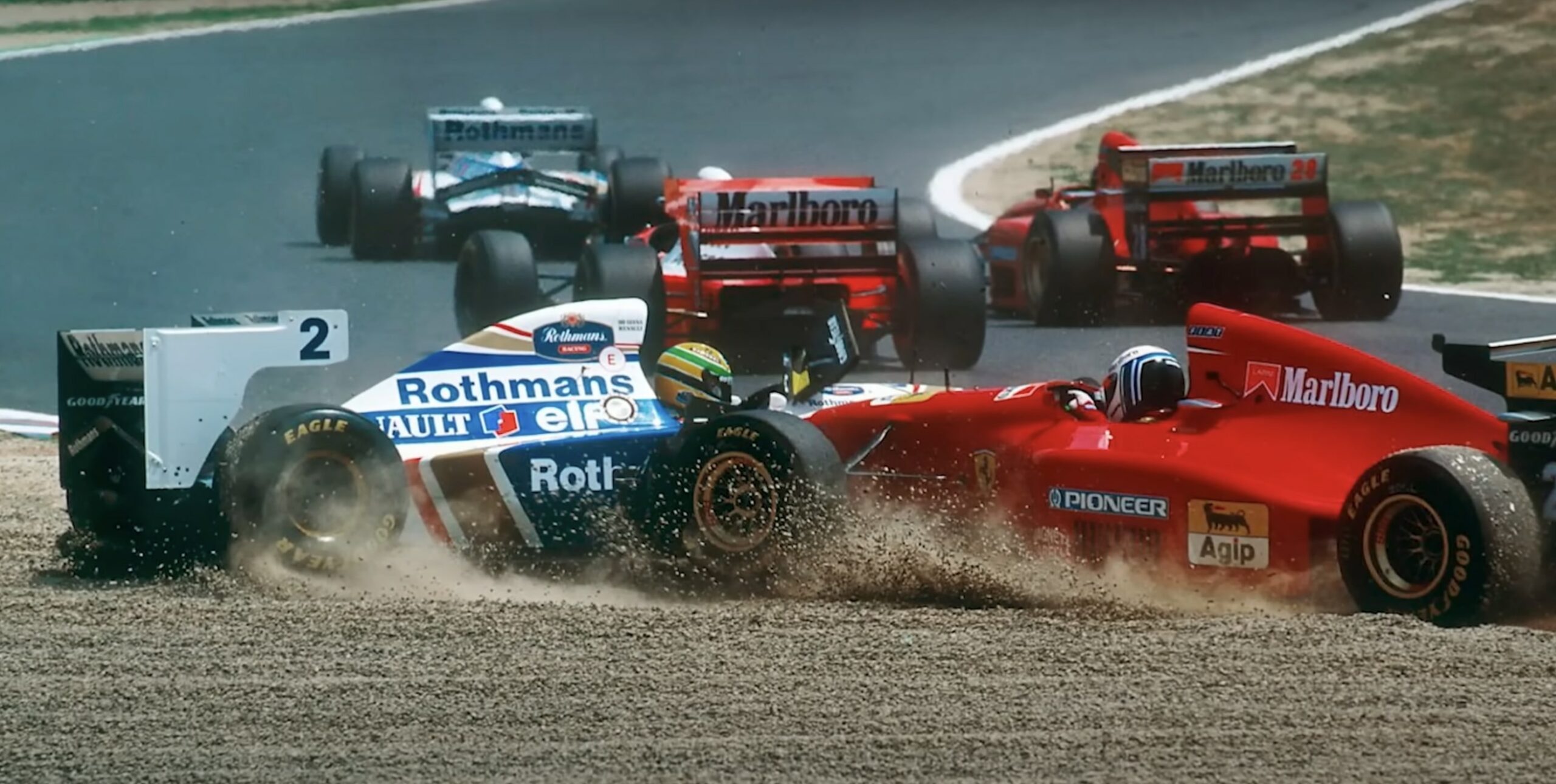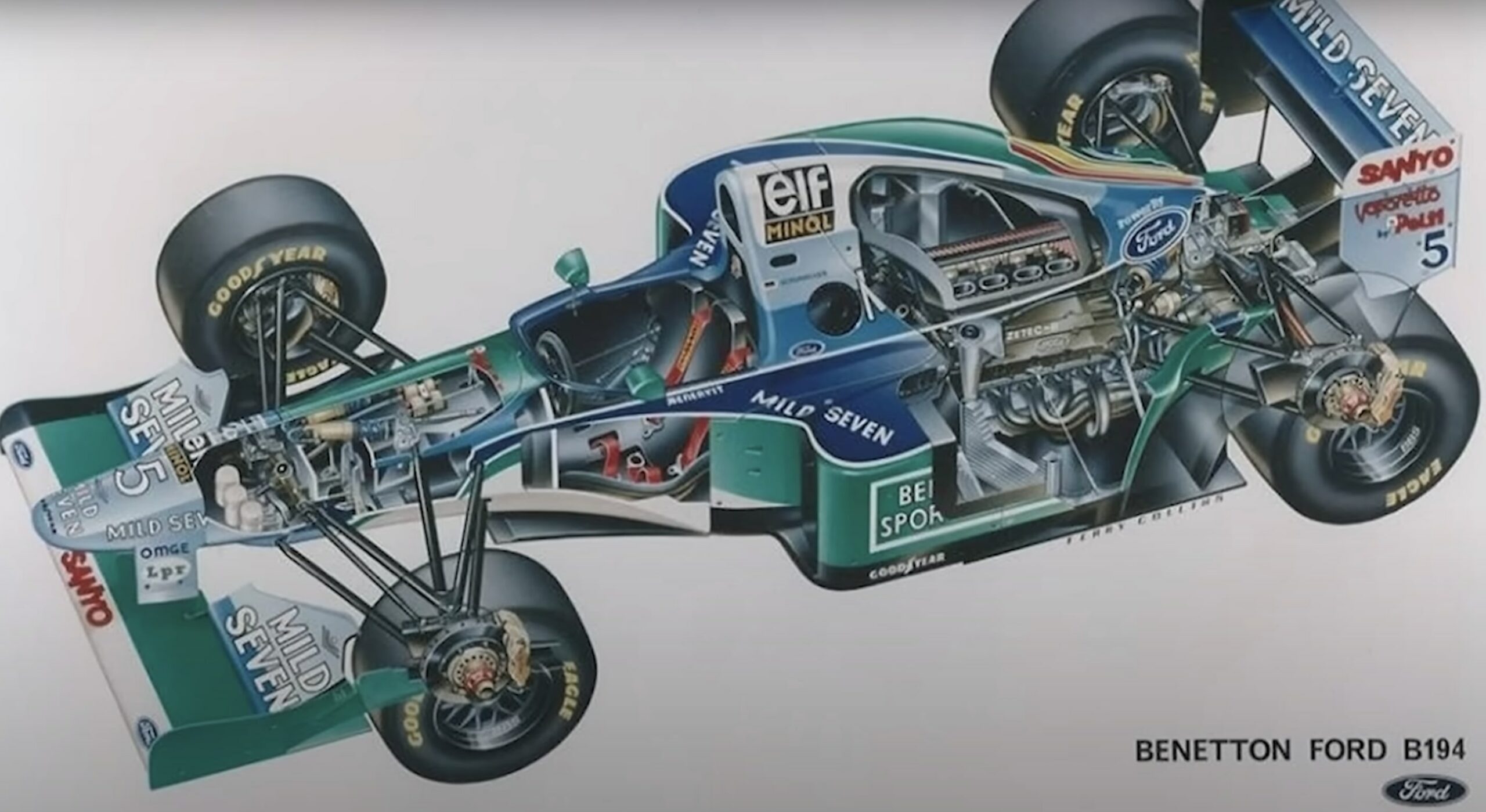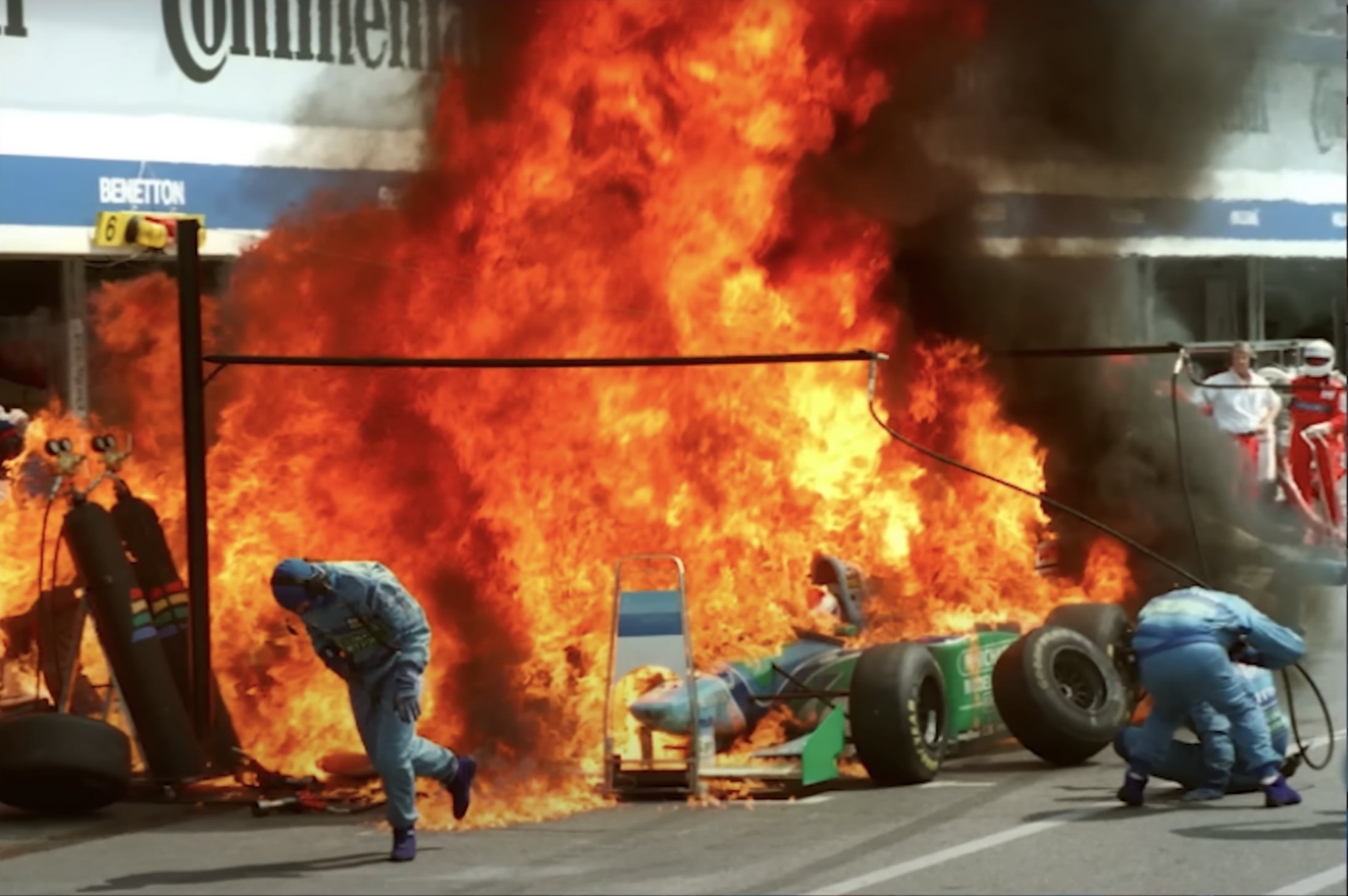In the high-stakes world of Formula 1, the 1994 season stands out as one of the most controversial. It wasn’t just about speed and skill—it was about ingenuity that may have crossed the line. Benetton, a team on the rise, found itself at the center of a scandal that involved allegations of cheating through technology, sparking debates about the role of driver skill versus engineering advantage.
The Pacific Grand Prix and Senna’s Suspicion
It all began at the 1994 Pacific Grand Prix, where Ayrton Senna, forced out of the race due to an early collision, watched from the sidelines. From this vantage point, he noticed something peculiar about the Benetton cars driven by Michael Schumacher and Jos Verstappen. The sound of their engines, particularly when exiting corners, struck him as strange. To Senna, it sounded like the soft misfire associated with traction control—a technology banned that season.

Engineering Innovations and FIA’s 1994 Ban
Just a year earlier, Formula 1 cars had been brimming with advanced driver aids like active suspension, traction control, and ABS. However, these innovations, while making cars faster and more stable, also simplified driving. The FIA stepped in, banning many of these aids in 1994 to increase driver dependency and, ostensibly, safety. This decision forced teams to adapt their engineering approaches, but not all teams were willing to abandon every advantage.
Traction Control Loopholes
Benetton was known for its technical prowess, and they saw opportunity in the new rules. Their approach involved adapting engine management to mimic traction control without technically violating the ban. By limiting engine acceleration in lower gears, they reduced the likelihood of wheel spin, particularly in first and second gears. This setup allowed drivers like Schumacher to maximize grip when launching off the line or navigating tight corners.
The Clever Use of Airbox Sensors
One of Benetton’s most ingenious methods was exploiting the airbox sensor, which measures pressure changes as the car moves through gears. By tracking these pressure changes, the team could approximate the car’s speed and thus identify the gear, allowing them to apply their power limit strategy more effectively. This workaround, while clever, pushed the boundaries of what was legally acceptable.

The Launch Control Discovery
After Ayrton Senna’s tragic death in May 1994, further investigation into Benetton revealed hidden software labeled “launch control”—a feature that automated the start sequence. Although Benetton argued it was only used during testing and required code reconfiguration for activation, the software’s mere existence raised suspicions. Launch control provided a potential advantage by managing clutch, gear shifts, and engine speed automatically—another banned driver aid. Ultimately, Benetton faced a fine but avoided harsher penalties due to the FIA’s inability to prove in-race usage.

Refuelling Controversy at the German Grand Prix
Benetton’s controversies extended to the German Grand Prix, where they were found to have removed a refuelling rig filter. The removal was intended to speed up pit stops, but it was against FIA regulations. Although Benetton claimed the filter removal had minimal effect, it became a contentious issue, especially after a dangerous pit fire involving Verstappen’s car. To mitigate fallout, team principal Flavio Briatore accepted a substantial fine.

Legacy of the 1994 Scandal
Despite these controversies, Benetton and Schumacher secured both the Drivers’ and Constructors’ Championships in 1994. The year remains a critical chapter in F1 history, highlighting the constant push and pull between engineering innovation and regulatory enforcement. For Benetton, the season’s engineering choices brought both triumph and scrutiny, forever shaping their legacy in Formula 1.
This article encapsulates the innovative yet controversial engineering tactics used by Benetton during one of F1’s most memorable seasons. Their strategies, from manipulating engine control to modifying refuelling rigs, serve as a case study in pushing technical boundaries. The 1994 season reminds us that Formula 1 is as much a battle of engineering ingenuity as it is a race of pure driving skill.
